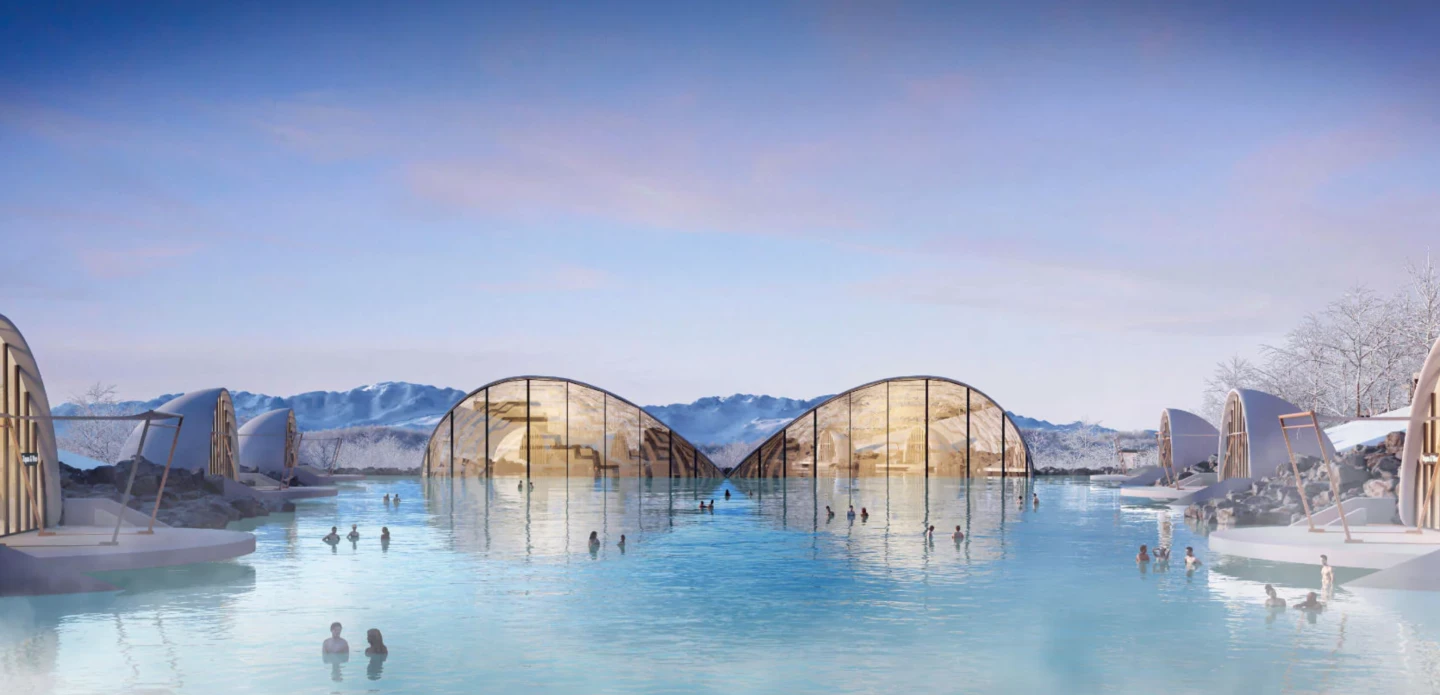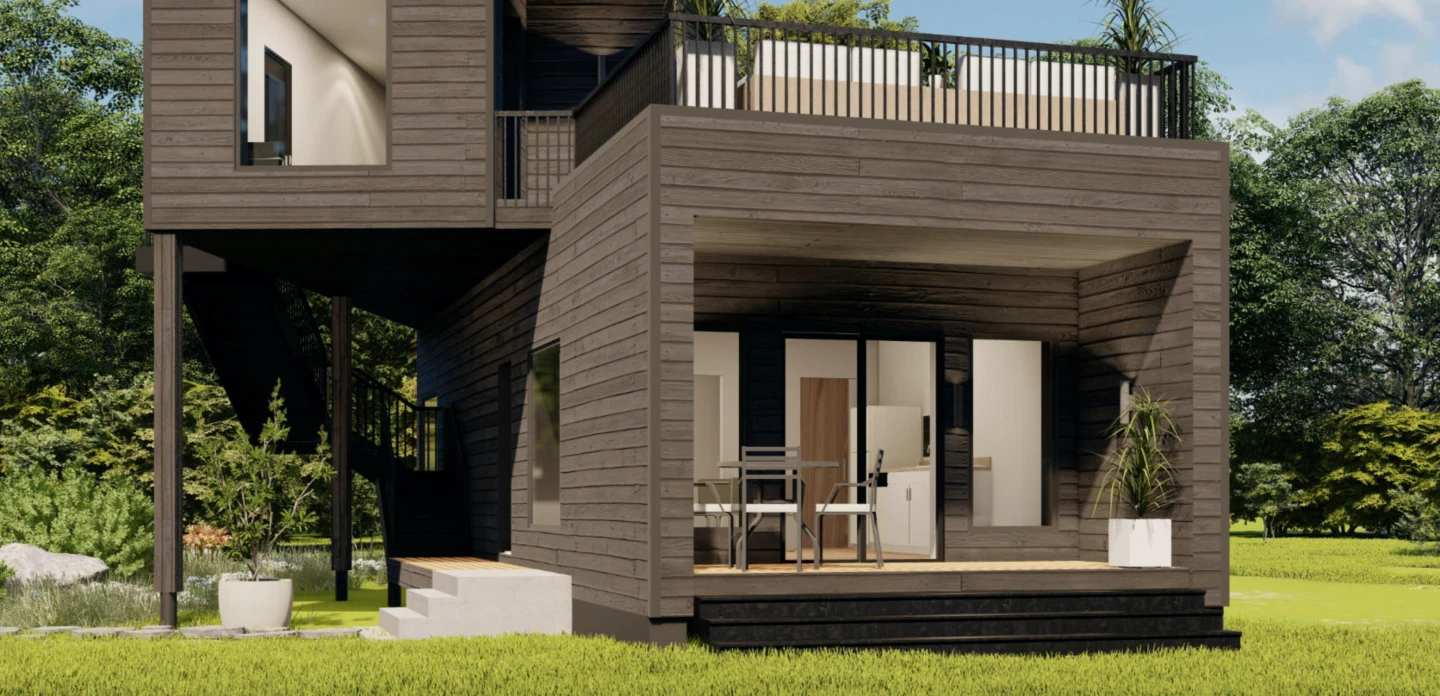Plans are afoot for a magnificent new open air lagoon in Canada that will be kept at balmy temperatures year round through a “huge Thermos” heating system underneath. Designed to be the largest of its type in the world and blend in with the natural landscape, the geoLagon project also includes hundreds of surrounding chalets to form a village that will be entirely energy self-sufficient.
Modeled on the famous geothermal lagoons of Iceland, the geoLagon is designed as an open-air attraction for visitors to relax and soak up the surroundings. To be built in Charlevoix, Quebec, the lagoon’s waters will span some 12,000 square meters (130,000 sq ft) and be warmed to a pleasant 39 °C (102 °F) all year, offering welcome refuge from the region’s frigid air temperatures that dip well below zero (32 °F) in the winter time.

Far bigger than Iceland’s spectacular 8,700-sq-m (93,000-sq-ft) Blue Lagoon, the planned geoLagon is set to be come the largest lagoon of its type in the world. It will be heated through an energy ecosystem consisting of geothermal, biomass, photovoltaics and solar heating systems, along with a thermal reservoir beneath the lagoon’s base to store heat.
“This is one of the keys to our recipe,” geoLagon owner and CEO Louis Massicotte told New Atlas. “I have a patent pending on this huge Thermos under our pool.”

Massicotte says that further optimizations and technologies like sewer heat recovery could see the geoLagon village even become an energy provider, but is positive that the project will at the very least be able to sustain itself without drawing power from the grid. This confidence stems from viability study carried out by Canadian sustainable energy outfit Akonovia, which ran the ruler over the project and concluded its demands could be met with these renewable energy sources.
“There is a strong potential that the geoLagon project will produce more energy than it consumes, which brings the opportunity to provide surplus electricity to the surrounding community,” Massicotte told us.

Clusters of chalets will surround the lagoon once the project is completed, capturing solar energy with photovoltaic cladding to help run the heat pumps for the water. These cottages can be made into short-term, Airbnb-style rentals, and according to Massicotte, 80 percent of them have been pre-sold to investors already.
While envisioned as a tourist attraction in its own right, the geoLagon will be built around 45 minutes from Quebec City, with ready access to art galleries, golf, ski resorts, farm-to-table dining and whale-watching experiences. So, while visitors will have ample water to float around in, they’ll have plenty more activities nearby should the mood strike.

The project is planned in three stages, beginning with the construction of 150 solar-powered cottages, followed by the lagoon as the second stage and then the remaining 150 chalets thereafter. All going well, Massicotte is planning a further three geoLagon projects for Quebec, in Laurentides, Lanaudière and in the Eastern Townships. He says that construction is expected to get underway in Charlevoix in March, and should take around 18 months.
Source: geoLagon









